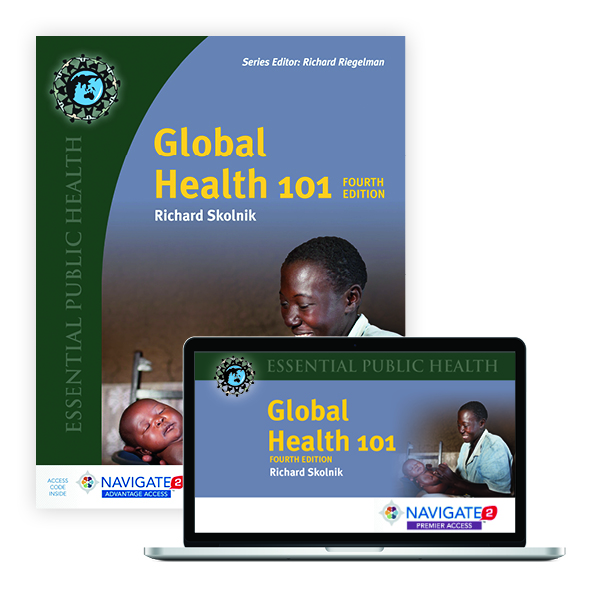Global Health 101, Fourth Edition comes with an array of ancillary materials that are meant to enhance teaching and learning and save faculty substantial amounts of time that they might otherwise spend developing such materials themselves. Some of these are meant for faculty, some for learners and some for both.
These materials include:
- model syllabi

- a global health reference list
- a list of global health websites
- a list of global health videos
- a list of global health massive open online courses (MOOCs)
- discussion cases on key themes
- PPTs for each chapter
- model mid-term and final examinations
- quiz questions
One syllabus is shown in the ancillaries but it is intended to be “modular”. As noted on the syllabus, the readings can be adjusted to the level of one’s course and the level of one’s students. In very broad terms, one might want to focus readings on the textbook for some 2-year college students; one might, however, want to supplement the textbook readings with assignments of major articles and reports for advanced students.
The reference list includes a list of readings organized by chapter of the book. Faculty may wish to choose readings for their syllabus that go beyond the textbook from this list. The author will be updating this list regularly.
Students will know their way around the internet. However, they may not know much about reputable sources for information about global health. Thus, the list of global health websites can be of substantial help in them in dealing with both data and content.
Many learners (especially these days!) prefer a visual approach to learning that includes YouTube and other videos. The ancillaries for the book include a curated list of a substantial number of videos that are organized by chapter of the book. Some faculty may wish to assign some videos; others might wish to just point students in the direction of the videos. The videos, like the photos in the book, can help to make themes more “real” for students, especially those with little global experience.
The list of MOOCs can be used the same way as the videos might be used. There are now many global health-related MOOCs. They are free of charge if students don’t seek a certificate from them. However, students would have to enroll in them to use them. Once enrolled, students can pick and choose what parts of a MOOC to watch. Faculty might wish to assign some parts of a MOOC. This could include sessions from the author’s Essentials of Global Health on Coursera. That MOOC essentially follows the order of Global Health 101, Fourth Edition.
Not every faculty will have the luxury of break-out groups for their classes. If so, however, the discussion cases might serve as a useful basis for a number of such groups. If not, the cases might serve as a useful basis for in-classroom discussions. This could either be for relatively small classes or for groups within bigger classes. Some of the discussion cases will give students an opportunity to “engage in public health work” or “put themselves in the middle of a humanitarian crisis.”
The ancillaries include PowerPoint presentations for Chapters 1 to 19, the global health content parts of the book. These slide sets include many of the tables and figures and a small number of photos from the book. Faculty may find these a useful adjunct to their teaching and/or an aid to student learning.
The ancillaries also contain quiz questions for Chapters 1 to 19, a model mid-term examination, and a model final examination. All of these questions are multiple choice questions. The mid-term and final exams are based on examinations that the author used at The George Washington University and Yale. These exams have an important orientation to the health-development link and the global burden of disease and risk factors. Faculty may wish, of course, to adjust them to the focuses of their own courses.
